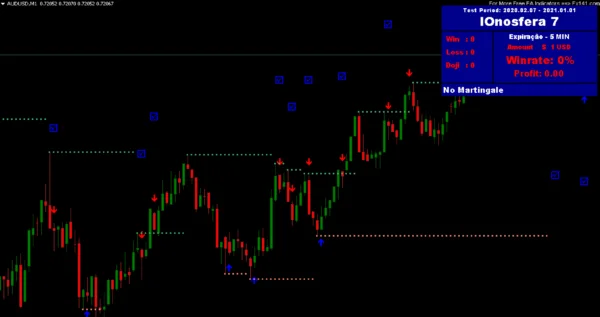High Success Rate Forex Indicators: Which Ones Actually Work?

Are you an experienced Forex trader looking for the best indicators to help you make successful trades? If so, then you’ve come to the right place! In this blog post, we’ll discuss the different types of forex indicators available and which ones have a proven high success rate. By the end of this post, you’ll have a better idea of which forex indicators are most suitable for your trading style and will help you maximize your profits. So let’s get started!
What are Forex Indicators?
Forex indicators are technical analysis tools that traders use to make informed decisions about the direction of the market. Ex009, they are mathematical algorithms designed to identify patterns and trends in price movements, helping traders predict future price movements. These indicators use past price data to generate signals that can be used for trading decisions. Common examples of indicators include moving averages, Bollinger Bands, Relative Strength Index (RSI), and MACD.
The Three Most Popular Forex Indicators
When trading Forex, there are numerous indicators available to help traders make decisions. Three of the most popular indicators are the Relative Strength Index (RSI), Moving Average Convergence Divergence (MACD), and ex009 – Stochastic Oscillator.
The Relative Strength Index is a momentum indicator which measures the magnitude of recent price changes to analyze overbought or oversold conditions. It ranges from 0 to 100 and typically traders look for levels below 30 or above 70 as a sign of an impending reversal.
The Moving Average Convergence Divergence, or MACD, is a momentum oscillator which compares two exponential moving averages and displays the relationship in a histogram. This indicator can be used to identify potential turning points in the market, as well as to determine the direction and strength of a trend.
The Stochastic Oscillator is another momentum oscillator which measures the level of a security’s closing price relative to its range over a set period of time. This indicator can be used to identify potential areas of support and resistance, as well as potential reversal points in the market.
By using these three indicators together, traders can develop a more complete view of the Forex markets and better gauge potential market movements.
The Pros and Cons of Forex Indicators
When it comes to trading in the Forex markets, the use of indicators can be a helpful tool. In this section, we will look at the pros and cons of using Forex indicators.
The main advantage of Forex indicators is that they can help traders better understand the trends in the market. By utilizing these tools, traders can identify patterns that they may have otherwise missed and capitalize on them. Additionally, indicators can provide traders with signals that can help them make more informed trading decisions.
On the other hand, there are some potential drawbacks associated with using Forex indicators. For one, many traders become overly reliant on them, which can lead to poor trading decisions. Additionally, indicators are often based on lagging data, meaning that the signals may not be as reliable as those derived from live data. Finally, it is important to remember that no indicator is perfect, and that all trading strategies should be tested thoroughly before being implemented in real-time trading.
So, Do Forex Indicators Work?
Forex indicators can be a valuable tool when it comes to making trading decisions. They provide traders with an idea of where the market is heading, which can be invaluable information when it comes to setting entry and exit points for a trade. However, it’s important to understand that there is no “magic bullet” that will guarantee success in forex trading. While indicators can give traders an edge, they should never be used as the sole means of making trading decisions.
It’s also important to understand that different types of indicators may have different levels of success. For example, some indicators may be more successful than others in predicting short-term price movements, while others may be better at predicting longer-term trends. As a result, it’s important to thoroughly research each indicator and its specific characteristics before using it as part of your trading strategy.
Ultimately, the success of any forex indicator depends on the trader’s ability to interpret the data and make informed trading decisions. Indicators can be incredibly helpful, but they are only as good as the trader using them. If a trader is unable to interpret the data or make informed decisions based on the data, then the indicator will be ineffective.